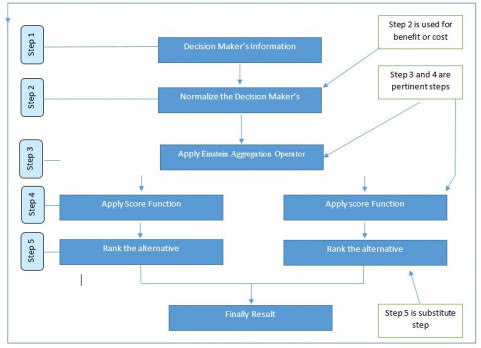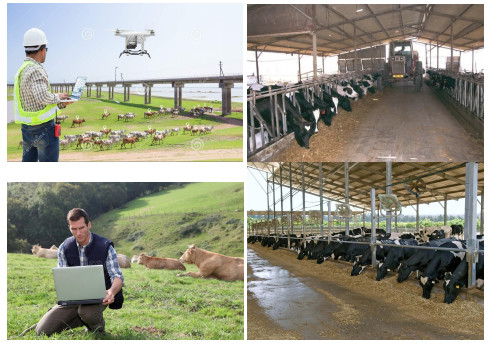|
[1]
|
A. Mardani, R. E. Hooker, S. Ozkul, S. Yifan, M. Nilashi, H. Z. Sabzi, et al., Application of decision making and fuzzy sets theory to evaluate the healthcare and medical problems: A review of three decades of research with recent developments, Expert Syst. Appl., 137 (2019), 202–231. https://doi.org/10.1016/j.eswa.2019.07.002 doi: 10.1016/j.eswa.2019.07.002

|
|
[2]
|
Z. Bashir, A. Wahab, T. Rashid, Three-way decision with conflict analysis approach in the framework of fuzzy set theory, Soft Comput., 26 (2022), 309–326. https://doi.org/10.1007/s00500-021-06509-3 doi: 10.1007/s00500-021-06509-3

|
|
[3]
|
X. Gou, Z. Xu, H. Liao, Hesitant fuzzy linguistic entropy and cross-entropy measures and alternative queuing method for multiple criteria decision making, Inform. Sci., 388 (2017), 225–246. https://doi.org/10.1016/j.ins.2017.01.033 doi: 10.1016/j.ins.2017.01.033

|
|
[4]
|
X. Fu, Y. Zhang, Y. G. Zhang, Y. L. Yin, S. C. Yan, Y. Z. Zhao, et al., Research and application of a new multilevel fuzzy comprehensive evaluation method for cold stress in dairy cows, J. Dairy Sci., 105 (2022), 9137–9161. https://doi.org/10.3168/jds.2022-21828 doi: 10.3168/jds.2022-21828

|
|
[5]
|
L. P. Maziero, M. G. M. Chacur, C. P. Cremasco, F. F. Putti, L. R. A. G. Filho, Fuzzy system for assessing bovine fertility according to semen characteristics, Livest. Sci., 256 (2022), 104821. https://doi.org/10.1016/j.livsci.2022.104821 doi: 10.1016/j.livsci.2022.104821

|
|
[6]
|
R. Zhang, Z. Xu, X. Gou, ELECTRE II method based on the cosine similarity to evaluate the performance of financial logistics enterprises under double hierarchy hesitant fuzzy linguistic environment, Fuzzy Optim. Decis. Ma., 22 (2023), 23–49. https://doi.org/10.1007/s10700-022-09382-3 doi: 10.1007/s10700-022-09382-3

|
|
[7]
|
R. Bosma, U. Kaymak, J. V. Berg, H. Udo, J. Verreth, Using fuzzy logic modelling to simulate farmers' decision-making on diversification and integration in the Mekong Delta, Vietnam, Soft Comput., 15 (2011), 295–310. https://doi.org/10.1007/s00500-010-0618-7 doi: 10.1007/s00500-010-0618-7

|
|
[8]
|
L. A. Zadeh, Fuzzy sets, Inform. Control, 8 (1965), 338–353. https://doi.org/10.1016/S0019-9958(65)90241-X
|
|
[9]
|
D. J. Dubois, Fuzzy sets and systems: Theory and applications, Academic press, 144 (1980).
|
|
[10]
|
K. T. Atanassov, Intuitionistic fuzzy sets, in Intuitionistic fuzzy sets, Physica, Heidelberg, 1999, 1–137. https://doi.org/10.1007/978-3-7908-1870-3_1
|
|
[11]
|
H. Wang, F. Smarandache, Y. Zhang, R. Sunderraman, Single valued neutrosophic sets, Infin. Study, 2010.
|
|
[12]
|
J. Ye, Multicriteria decision-making method using the correlation coefficient under single-valued neutrosophic environment, Int. J. Gen. Syst., 42 (2013), 386–394. https://doi.org/10.1080/03081079.2012.761609 doi: 10.1080/03081079.2012.761609

|
|
[13]
|
R. Şahin, Multi-criteria neutrosophic decision making method based on score and accuracy functions under neutrosophic, Comput. Sci., 2014. https://doi.org/10.5281/zenodo.22994
|
|
[14]
|
Y. Jin, M. Kamran, N. Salamat, S. Zeng, R. H. Khan, Novel distance measures for single-valued neutrosophic fuzzy sets and their applications to multicriteria group decision-making problem, J. Func. Space., 2022.
|
|
[15]
|
M. Riaz, M. R. Hashmi, D. Pamucar, Y. M. Chu, Spherical linear Diophantine fuzzy sets with modeling uncertainties in MCDM, Comput. Model. Eng. Sci., 126 (2021), 1125–1164. https://doi.org/10.32604/cmes.2021.013699 doi: 10.32604/cmes.2021.013699

|
|
[16]
|
S. Broumi, F. Smarandache, M. Dhar, Rough neutrosophic sets, Infin. Study, 2014. https://doi.org/10.5281/zenodo.30310
|
|
[17]
|
R. Krishankumaar, A. R. Mishra, X. Gou, K. S. Ravichandran, New ranking model with evidence theory under probabilistic hesitant fuzzy context and unknown weights, Neural Comput. Appl., 2022, 1–15. https://doi.org/10.1007/s00521-021-06653-9
|
|
[18]
|
Z. Hao, Z. Xu, H. Zhao, Z. Su, Probabilistic dual hesitant fuzzy set and its application in risk evaluation, Knowl.-Based Syst., 127 (2017), 16–28. https://doi.org/10.1016/j.knosys.2017.02.033 doi: 10.1016/j.knosys.2017.02.033

|
|
[19]
|
W. Zhou, Z. Xu, Group consistency and group decision making under uncertain probabilistic hesitant fuzzy preference environment, Inform. Sci., 414 (2017), 276–288. https://doi.org/10.1016/j.ins.2017.06.004 doi: 10.1016/j.ins.2017.06.004

|
|
[20]
|
X. Gou, Z. Xu, H. Liao, F. Herrera, Probabilistic double hierarchy linguistic term set and its use in designing an improved VIKOR method: The application in smart healthcare, J. Oper. Res. Soc., 72 (2021), 2611–2630. https://doi.org/10.1080/01605682.2020.1806741 doi: 10.1080/01605682.2020.1806741

|
|
[21]
|
M. Rasheed, E. Tag-Eldin, N. A. Ghamry, M. A. Hashmi, M. Kamran, U. Rana, Decision-making algorithm based on Pythagorean fuzzy environment with probabilistic hesitant fuzzy set and Choquet integral, AIMS Math., 8 (2023), 12422–12455. https://doi.org/10.3934/math.2023624 doi: 10.3934/math.2023624

|
|
[22]
|
H. Garg, A novel trigonometric operation-based q-rung orthopair fuzzy aggregation operator and its fundamental properties, Neural Comput. Appl., 32 (2020), 15077–15099. https://doi.org/10.1007/s00521-020-04859-x doi: 10.1007/s00521-020-04859-x

|
|
[23]
|
K. Ullah, T. Mahmood, H. Garg, Evaluation of the performance of search and rescue robots using T-spherical fuzzy Hamacher aggregation operators, Int. J. Fuzzy Syst., 22 (2020), 570–582. https://doi.org/10.1007/s40815-020-00803-2 doi: 10.1007/s40815-020-00803-2

|
|
[24]
|
C. Carlsson, R. Fullér, Fuzzy reasoning in decision making and optimization, Springer Science & Business Media, 82 (2001).
|
|
[25]
|
N. Gonul Bilgin, D. Pamučar, M. Riaz, Fermatean neutrosophic topological spaces and an spplication of neutrosophic Kano method, Symmetry, 14 (2022), 2442. https://doi.org/10.3390/sym14112442 doi: 10.3390/sym14112442

|
|
[26]
|
Z. Xu, W. Zhou, Consensus building with a group of decision makers under the hesitant probabilistic fuzzy environment, Fuzzy Optim. Deci. Ma., 16 (2017), 481–503. https://doi.org/10.1007/s10700-016-9257-5 doi: 10.1007/s10700-016-9257-5

|
|
[27]
|
S. Shao, X. Zhang, Y. Li, C. Bo, Probabilistic single-valued (interval) neutrosophic hesitant fuzzy set and its application in multi-attribute decision making, Symmetry, 10 (2018), 419. https://doi.org/10.3390/sym10090419 doi: 10.3390/sym10090419

|
|
[28]
|
R. M. Zulqarnain, A. Iampan, I. Siddique, H. Abd, E. W. Khalifa, Some fundamental operations for multi-polar interval-valued neutrosophic soft set and a decision-making approach to solve MCDM problem, Neutrosophic Sets Sy., 51 (2022), 205–220.
|
|
[29]
|
R. M. Zulqarnain, X. L. Xin, M. Saqlain, M. Saeed, F. Smarandache, M. I. Ahamad, Some fundamental operations on interval valued neutrosophic hypersoft set with their properties, Neutrosophic Sets Sy., 40 (2021), 134–148. https://doi.org/10.5281/zenodo.4549352 doi: 10.5281/zenodo.4549352

|
|
[30]
|
M. Kamran, S. Ashraf, M. Naeem, A promising approach for decision modeling with single-valued neutrosophic probabilistic hesitant fuzzy Dombi operators, Yugoslav J. Oper. Res., 2023. http://dx.doi.org/10.2298/YJOR230115007S
|
|
[31]
|
R. Sahin, F. Altun, Decision making with MABAC method under probabilistic single-valued neutrosophic hesitant fuzzy environment, J. Amb. Intel. Hum. Comp., 11 (2020), 4195–4212. https://doi.org/10.1007/s12652-020-01699-4 doi: 10.1007/s12652-020-01699-4

|
|
[32]
|
M. Riaz, Y. Almalki, S. Batool, S. Tanveer, Topological structure of single-valued neutrosophic hesitant fuzzy sets and data analysis for uncertain supply chains, Symmetry, 14 (2022), 1382. https://doi.org/10.3390/sym14071382 doi: 10.3390/sym14071382

|
|
[33]
|
C. F. Liu, Y. S. Luo, New aggregation operators of single-valued neutrosophic hesitant fuzzy set and their application in multi-attribute decision making, Pattern Anal. Appl., 22 (2019), 417–427. https://doi.org/10.1007/s10044-017-0635-6 doi: 10.1007/s10044-017-0635-6

|
|
[34]
|
M. Kamran, S. Ashraf, M. Naeem, A promising approach for decision modeling with single-valued neutrosophic probabilistic hesitant fuzzy Dombi operators, Jugoslav J. Oper. Res., 2023.
|
|
[35]
|
G. Kaur, H. Garg, A novel algorithm for autonomous parking vehicles using adjustable probabilistic neutrosophic hesitant fuzzy set features, Expert Syst. Appl., 2023, 120101. https://doi.org/10.1016/j.eswa.2023.120101
|
|
[36]
|
M. Kamran, R. Ismail, E. H. A. Al-Sabri, N. Salamat, M. Farman, S. Ashraf, An optimization strategy for MADM framework with confidence level aggregation operators under probabilistic neutrosophic hesitant fuzzy rough environment, Symmetry, 15 (2023), 578. https://doi.org/10.3390/sym15030578 doi: 10.3390/sym15030578

|















 DownLoad:
DownLoad: